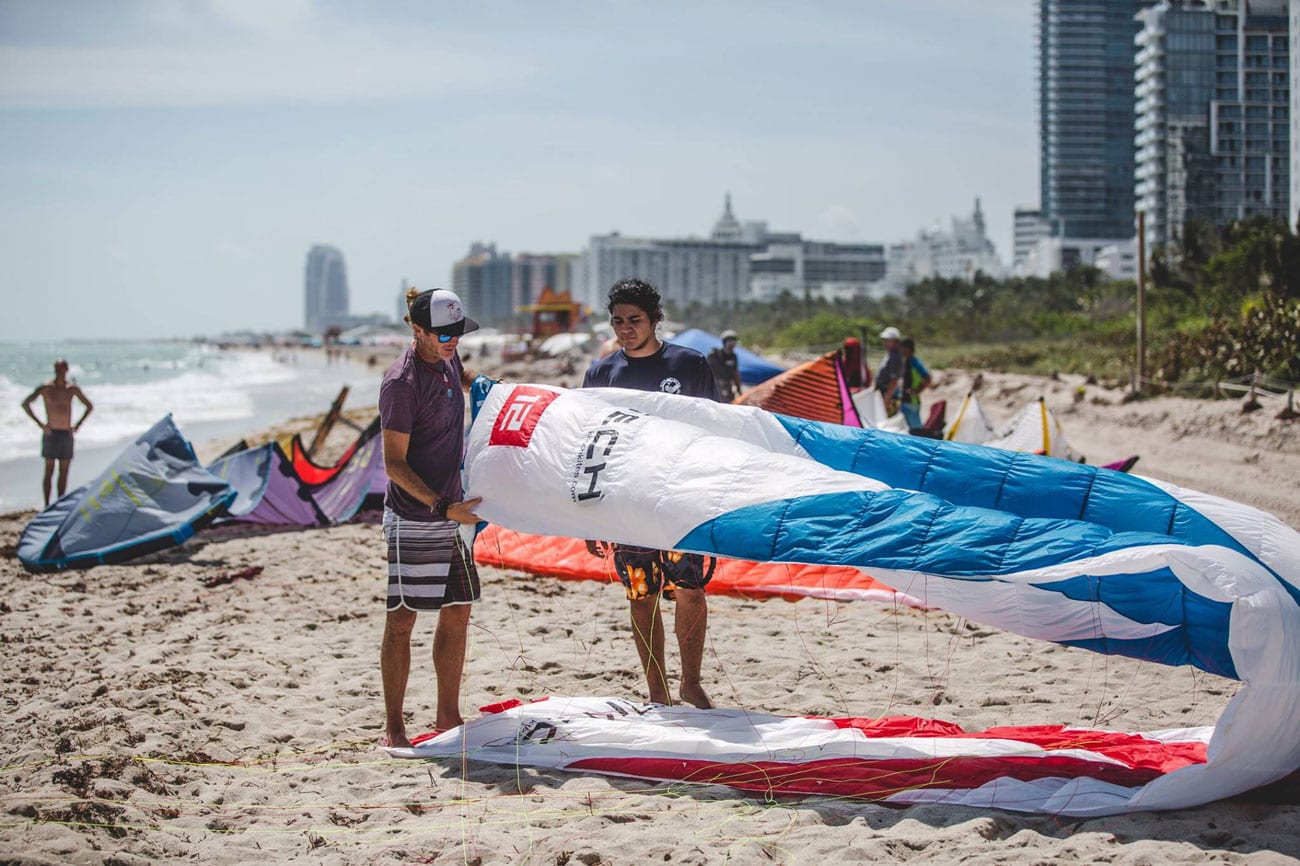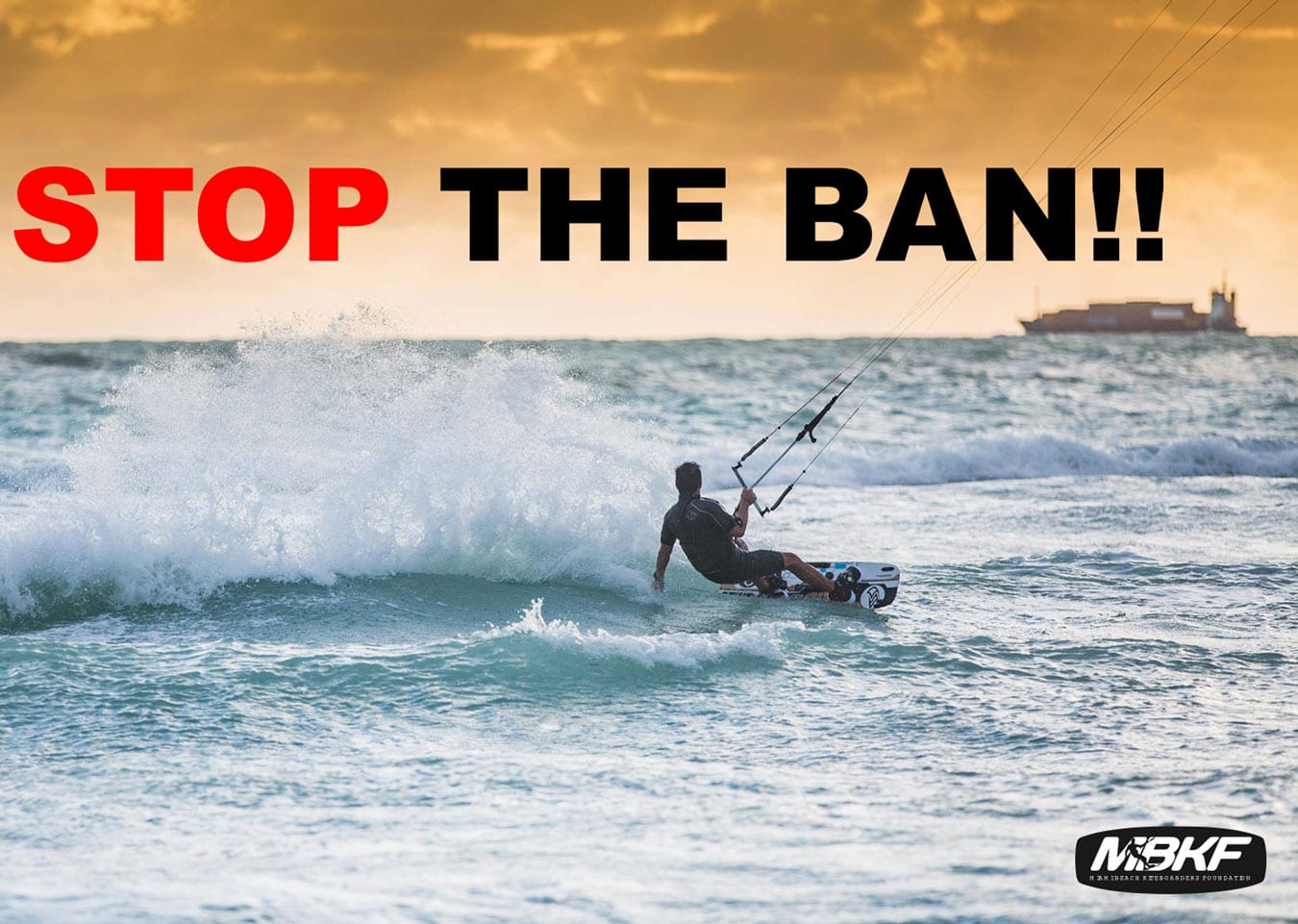Since the early days of kiteboarding, we have been passionately chasing the wind all over the world. Most of the top locations associated with the sport are remote, tropical destinations, like the Philippines, Brazil or Mauritius, but there has always been one exciting spot that has attracted kiters not only for its consistent winter winds but also for its vibrant nightlife, world class restaurants and perfect year-round weather. This spot is Miami Beach.
For over two decades, kite tourists have flocked to the area from all over the world, attracted to this exciting beach lifestyle. The exemplary kiteboarding conditions of Miami Beach have been such a point of pride for the city that the international airport welcomes new tourists with an epic video of a kiteboarder upon their arrival.
Now that the sport that has played a major role in shaping Miami Beach’s exuberant culture and brought in a significant amount of tourism revenue to the local economy, is under threat. The city is looking to legislate and ban kiteboarding from Miami Beach.
The campaign, led by Ocean Rescue Miami Beach, is looking to ban kiteboarding across its 10 mile stretch of public access beach, including a stretch of sand near 25th Street Collins Avenue arguably one of the most desired kiteboarding locations in Miami. In turn, the city wants the far-out beach of 84th street to become a designated kiteboarding location but only on weekdays and not on holidays.
This is problematic for multiple reasons: the small area size designated for hundreds of kiteboarders, the inaccessible location for city dwellers and tourists alike, and the fact that it is a dog beach. Additionally, tourists and residents alike who come to enjoy kiteboarding in Miami are typically looking to kite on the weekend not the weekdays.

The basis of the kiteboarding ban? A turf war local non-kiteboarding residents annoyed and wanting to banish all kiteboarders because of the bad behavior of a few.
Currently, the city has no enforceable laws or policies around kiteboarding. In other words, kiteboarders have no standard of behavior to be held accountable to. But, instead of implementing policy to solve this issue, Miami Beach City Council has decided to vote on March 7th in order to ban kiteboarding.
This extreme measure is being considered despite there being zero Miami Beach police reports involving kiteboarding or kiteboarders, and the one accident that has been reported was simply a case of bad manners. A rude kitesurfer thumped into the back of two local’s beach chairs, and though the Miami Beach Police came to the scene, they didn’t even bother to take a full report.
Kiteboarding, when practiced properly, does not pose a danger to beach goers. The far more common threats that should concern Florida beach dwellers are interactions with marine life like jellyfish, catfish, and sting rays; lacerations from barnacles, flying sun umbrellas and other sharp objects, and too much alcohol consumption. There are clear records that show these are the most common beach dangers and not one record to substantiate that kiteboarding is a threat to the public.
In fact, kiteboarders have a record of helping those in distress. Because of the intense winds the sport requires, kitesurfers often find themselves in the position to help individuals who have been overpowered by the tide and currents.
Just one week ago a local Miami Beach kiteboarder saved the life of a tourist in front of the Casa Blanca hotel who had gotten in trouble with a strong rip current. This is not an isolated incident, as there are several such recorded saves by kiteboarders on Miami Beach. In reality, the chances of getting hurt by a kiteboarder are incredibly small.

To make Miami Beach a safe and comfortable atmosphere for everyone, the Miami Beach Kiteboarding Foundation (MBKF) is lobbying to create actionable policy where kiteboarding and beachcombers can harmoniously share the public access space and are agreeing to be regulated by the city.
MBKF has already developed three simple and enforceable rules that would help beach goers feel more comfortable and hold kiteboarders accountable for their behavior.
The rules are:
- NEVER fly your kite over the beach unless launching or landing
- Stay 200 feet from shore when riding
- Stay 50 feet from people at all times
Additionally, MBKF recommends that the requirement IKO 3 certification across Miami Beach be made mandatory by the city. These rules must however be enforced by local police, park ranger and ocean rescue in order to hold anyone accountable, as self-policing has little to no effect.
The organization has offered to sponsor signage and has worked tirelessly with neighborhood organizations for a compromise and co-existence, with little to no co-operation or consideration. MBKF lastly request the city to consider more locations for novice kiteboarders and teaching the sport.
 Banning kiteboarding from Miami Beach would be a loss of culture, revenue, and daily joy for so many residents and global citizens. We encourage all locals and tourists to sign the petition to keep Miami beaches public, safe, and comfortable by implementing kiteboarding laws. If you have time, please write to your Miami Beach representative, supporting the three rules developed by MBFK. The organization has also started a GoFundMe page to help cover some of the legal expenses they have assumed and will continue to incur in an attempt to preserve kiteboarding access.
Banning kiteboarding from Miami Beach would be a loss of culture, revenue, and daily joy for so many residents and global citizens. We encourage all locals and tourists to sign the petition to keep Miami beaches public, safe, and comfortable by implementing kiteboarding laws. If you have time, please write to your Miami Beach representative, supporting the three rules developed by MBFK. The organization has also started a GoFundMe page to help cover some of the legal expenses they have assumed and will continue to incur in an attempt to preserve kiteboarding access.

